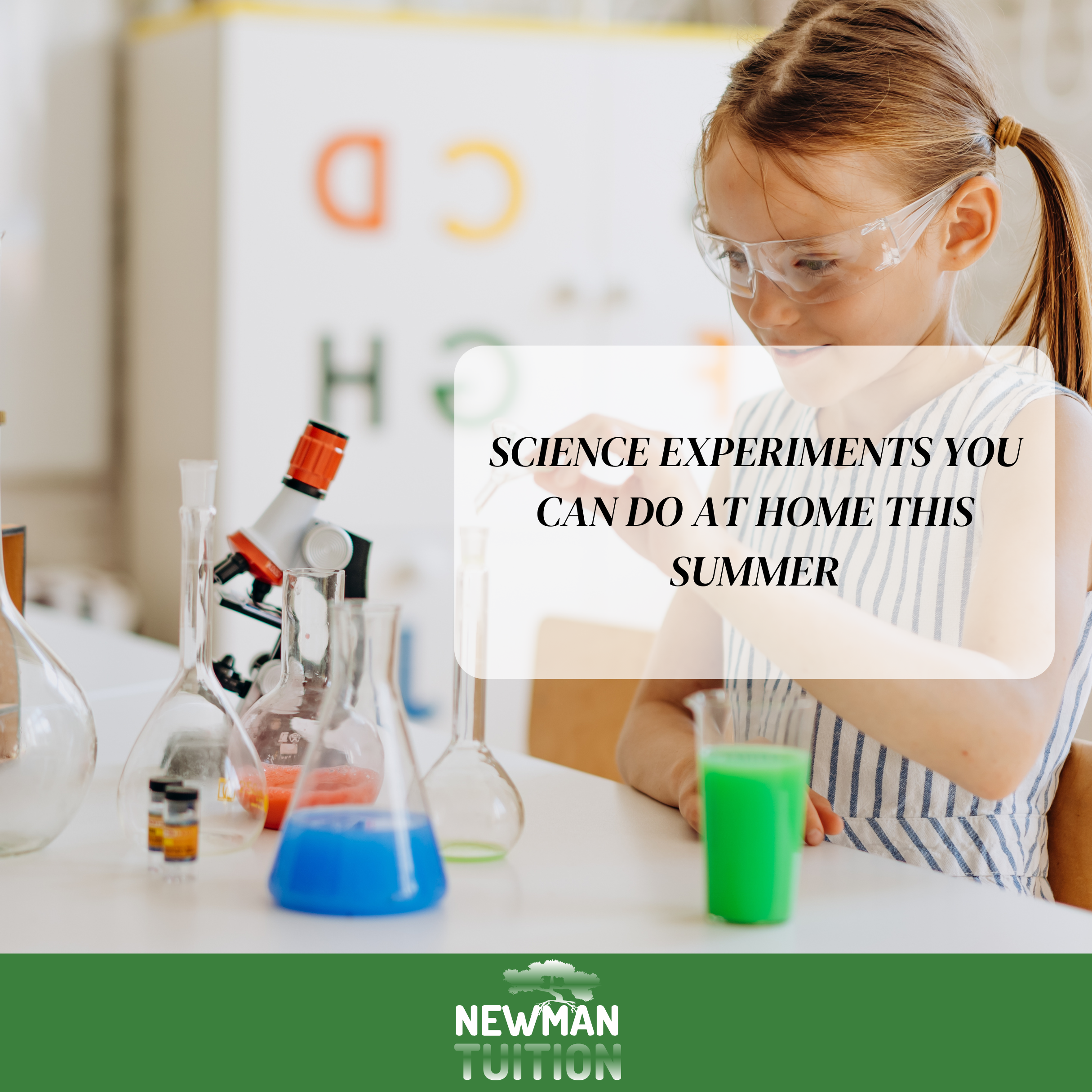Science Experiments You Can Do at Home This Summer

The summer holidays are the perfect time to spark curiosity and keep young minds engaged outside the classroom. Science experiments don’t need a lab – just a few everyday items and a healthy dose of curiosity!
Whether you’re a parent looking to entertain your children or a tutor seeking creative ways to extend learning over the summer, these simple and safe experiments offer fun, hands on learning right at home.
1. Baking Soda Volcano
What you’ll need:
- Baking soda
- Vinegar
- Washing-up liquid
- Food colouring (optional)
- A container or homemade volcano structure
How it works:
Combine baking soda, washing-up liquid, and a few drops of food colouring in your container. Then pour in some vinegar and watch the eruption! This is a classic acid–base reaction that produces carbon dioxide gas.What children learn:
Chemical reactions, states of matter, and gas formation.2. Grow Your Own Crystals
What you’ll need:
- Table salt or sugar
- Hot water
- A glass jar
- A spoon
- String and a pencil
How it works:
Dissolve as much salt or sugar as possible into hot water, then pour the solution into a jar. Tie a piece of string to a pencil and rest it across the top of the jar so the string dangles in the liquid. Over a few days, crystals will begin to form on the string.What children learn:
Saturation, evaporation, and crystal formation.3. Invisible Ink with Lemon Juice
What you’ll need:
- Lemon juice
- Cotton buds
- White paper
- A lamp or iron (with adult supervision)
How it works:
Dip a cotton bud in lemon juice and write a secret message. Let it dry. When you’re ready to reveal the message, gently heat the paper by holding it under a lamp or using an iron.What children learn:
Oxidation and the effects of heat on organic compounds.4. Make a Rain Cloud in a Jar
What you’ll need:
- A clear jar or glass
- Shaving foam
- Water
- Food colouring
- A dropper or teaspoon
How it works:
Fill the jar with water and add a layer of shaving foam on top. Then slowly drop food colouring onto the “cloud” and watch as it falls through the foam and rains into the jar.What children learn:
Weather patterns, density, and how rain forms in clouds.5. DIY Lava Lamp
What you’ll need:
- A clear bottle
- Vegetable oil
- Water
- Food colouring
- Alka-Seltzer or other effervescent tablets
How it works:
Fill the bottle ¾ full with oil, then add water until nearly full. Add a few drops of food colouring. Drop in half an Alka-Seltzer tablet and watch the colourful bubbles dance.What children learn:
Liquid density, chemical reactions, and immiscibility of liquids.Why Summer Science is Worthwhile
These experiments go beyond just fun they help develop observation skills, promote problem solving, and nurture a natural interest in the world around us. Best of all, they make learning feel like play.
If your child is passionate about science or you’d like to maintain their academic momentum over the summer, our expert science tutors are available for one-to-one sessions tailored to every age and ability. Whether it’s preparing for GCSEs, A-levels or simply exploring a love of learning, we’re here to help.
Contact us today to book a consultation or find the right tutor to support your child’s educational journey.